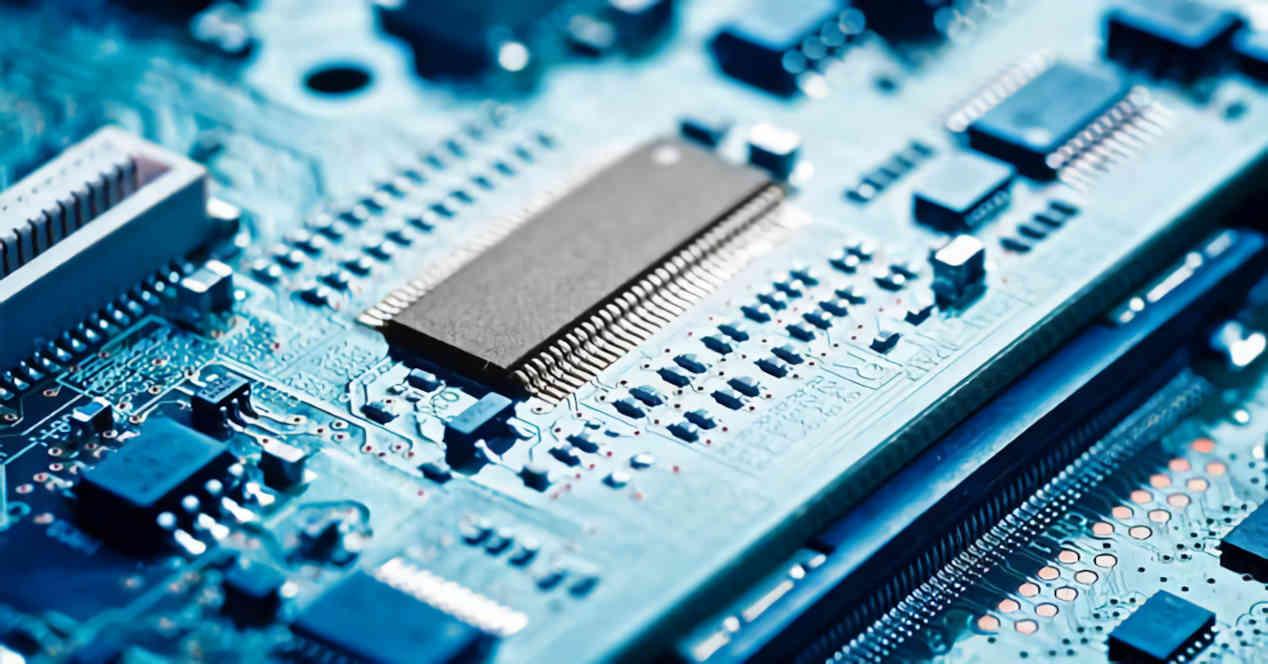All the integrated circuits on a hardware board need to be powered and if we look at the pin configuration of each of them, we will see that a part of them is designed not to send or receive data, but for them. power and operate them. In addition, on this same board we can find a large number of voltage regulating converters, capacitors and other analog electronic components that manage the energy that will be distributed on the board.
When designing the equipment, not only the position of the elements according to the architecture is taken into account, but this will also condition the way in which the rails are distributed around, not only with regard to the dissemination of information, but also from the electricity that runs the whole system.
What is a PMIC?
The acronym PMIC stands for Power Management Integrated Circuit or in Spanish Integrated Circuit for energy management. They are used to simplify the distribution of circuits in hardware in a very easy to explain way. Each of them receives a single source of energy and is responsible for dividing and distributing it for different elements.
Today the circuits in order to have a better energy management have more than one power rail, so they will have several pins for it. For example, when a CPU or GPU is placed in low power modes, what is done is to change the power rail and for this the PMIC is important, since the processor only has to notify the manager energy to stop feeding one spindle to feed another, all this without having to switch off the process ing unit which makes the request and must stop functioning.
In general, when we turn a hardware component on and off or simply increase or decrease its consumption level, a PMIC is served. Not only at the level of several chips in a circuit, but also even within the same integrated circuit such as a processor. Unsurprisingly, they are essential for overclocking, speed boosting and a long time etcetera.
What does a PMIC look like?
A PMIC consists of a series of elements to perform its functions, including:
- Voltage regulation, because in the variation of the clock speed of processors and memory, the voltage is directly related. The PMIC is responsible for ensuring that the processor is receiving the correct voltage at all times and that overload does not occur.
- Some PMICs include management of the energy with which a battery powers the system. This is important for laptops, smartphones, tablets and even peripherals.
- One can find cases where, in addition to voltage management, the power management integrated circuit also has the ability to vary the clock speed at which the processor or memory to which they are connected is operating.
- Many use a real-time clock, for subsequent communication of exact times to keep voltages and clock speeds high.
The last point is explained in a simple way, integrated circuits count the time in pulse, where each pulse is a clock cycle. We cannot forget that the frequency is the inverse of the time, but in the real world and by standard we count the times by the international system. The fact that there is a real time clock in a PMIC is essential for power management.
What are its other functions?
PMICs are not only found inside chips or on their motherboards, but we can also find them inside power supplies where their main job is to protect hardware from power surges. If you’re lucky enough to have an 80 Plus Gold or better certified power supply with protective measures, thank any of these hardware items we’re talking about.
And without leaving the power supplies, they also allow us to use several. For example, we may be dealing with a laptop with a USB-C connector for fast charging and a normal connector. Thanks to the PMIC, we can use both without problems to charge the PC and without leaving the USB, they are also essential for the power supply of the devices connected to our computer, and not only those that use the universal serial bus, but also those they are connected to PCI Express and SATA ports.
They are therefore found everywhere and are responsible not only for managing the power supply to the different parts of your PC, but also not to end up being overloaded.
The microcontroller inside the PMIC
Each PMIC contains a microcontroller and therefore a stand-alone processor with its programmable RAM and ROM memory that runs a program recursively. However, it is possible to update said program and the operation of the PMIC using an I2C interface that they usually integrate for this.
It should be taken into account that the PMIC operates completely isolated from the system, so it is not a device or a component thereof directly related to the CPU. So your microcontroller will run some internal program or another based on information from outside. If, for example, an internal thermometer detects that a component is too hot, the PMIC microcontroller will act accordingly, lowering the voltage to lower the clock speed without being prompted by the affected chip.
Table of Contents












